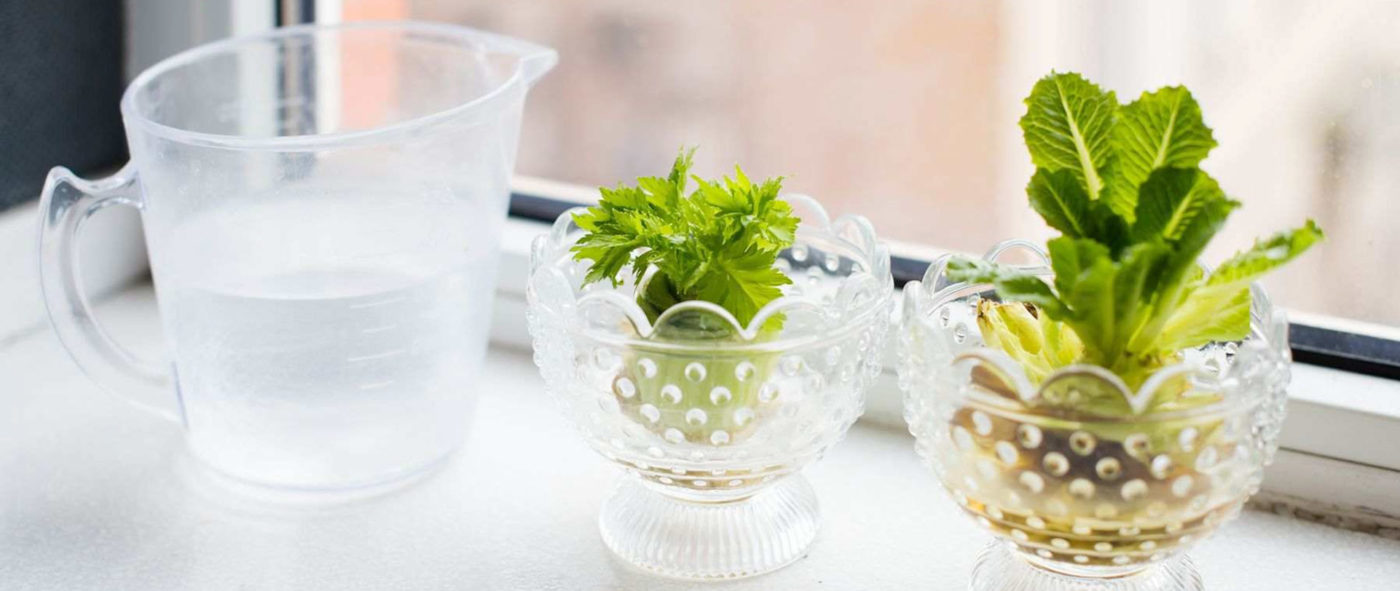Kitchen Scrap Gardening
Regrow Your Veggies
Did you know that you can grow some vegetables from your kitchen scraps? It’s easy, saves you money on your grocery bills, and reduces waste. If you have kids, it also provides lessons on how plants grow, recycling, and saving money. Whatever plants you choose to try, start with organic vegetables as some nonorganic plants have been treated to prevent growing. For best results, use good quality potting soil.
Romaine Lettuce
When you cut your lettuce for eating, leave about two inches at the base, or heart. Simply place this in a glass or jar with water and soon you’ll see new leaves sprouting from the center. As the old pieces of outer leaf die, remove them. Once the plant is established, your lettuce can be planted in an outdoor garden — if your climate permits.
Celery
Similar to romaine lettuce, you should cut your celery stalks off the base, leaving about two inches of the stalks. Place the base in water — don’t submerge it — and in a few days you’ll see roots begin to form at the bottom and leaves on the top. After a week or so, plant in soil, leaving the leaves above the surface.
Potatoes
To cultivate new potatoes, cut a potato into pieces, with two to three eyes on each piece. Dry them out for a couple of days to prevent rotting. Plant the pieces of potato in a pot or in your garden. Potatoes grow under the soil, so in a few months, you should have some new taters to dig up!
Herbs
Fresh herbs add flavor and spice to whatever dish you’re cooking. Grow your own by cutting a 4 inch stem from your leftover basil, parsley, cilantro, chives, or other herb and place it with the ends in a glass of water. With the help of indirect sunlight, the roots should form in a matter of days. When your roots are about an inch long, they may be planted in soil. Keep them in a pot in the kitchen for ease of use.
Pineapple
Bet you’ve never thought of growing pineapple at home! It takes a few years, but it’s so worth it! Take the top off of the pineapple — the part with leaves that you’d usually discard — just hold the pineapple in one hand and the top in the other and twist the top right off. Remove a few rows of the lower leaves to expose the roots of the plant. Start with a medium pot. You’ll have to transplant it later, but pineapples like the pot to hug its roots. Make sure there are holes for drainage in the pot. Put the pineapple gently into the soil to cover its roots. No more than the lowest set of leaves should be below soil level. Place the pot in full sun in temperatures above 60 degrees. Depending on your climate, you may need to bring it indoors to avoid lower temps. In two to three years, your plant will bear fruit and you can enjoy home-grown pineapple!
More Veggies
There are so many vegetables that you can easily grow from your kitchen scraps. Your waste from carrots, sweet potatoes, onions, beets, garlic, ginger, and other vegetables can be used to grow new plants for your dinner table. If you run into problems or have questions, contact your local plant nursery for advice.

